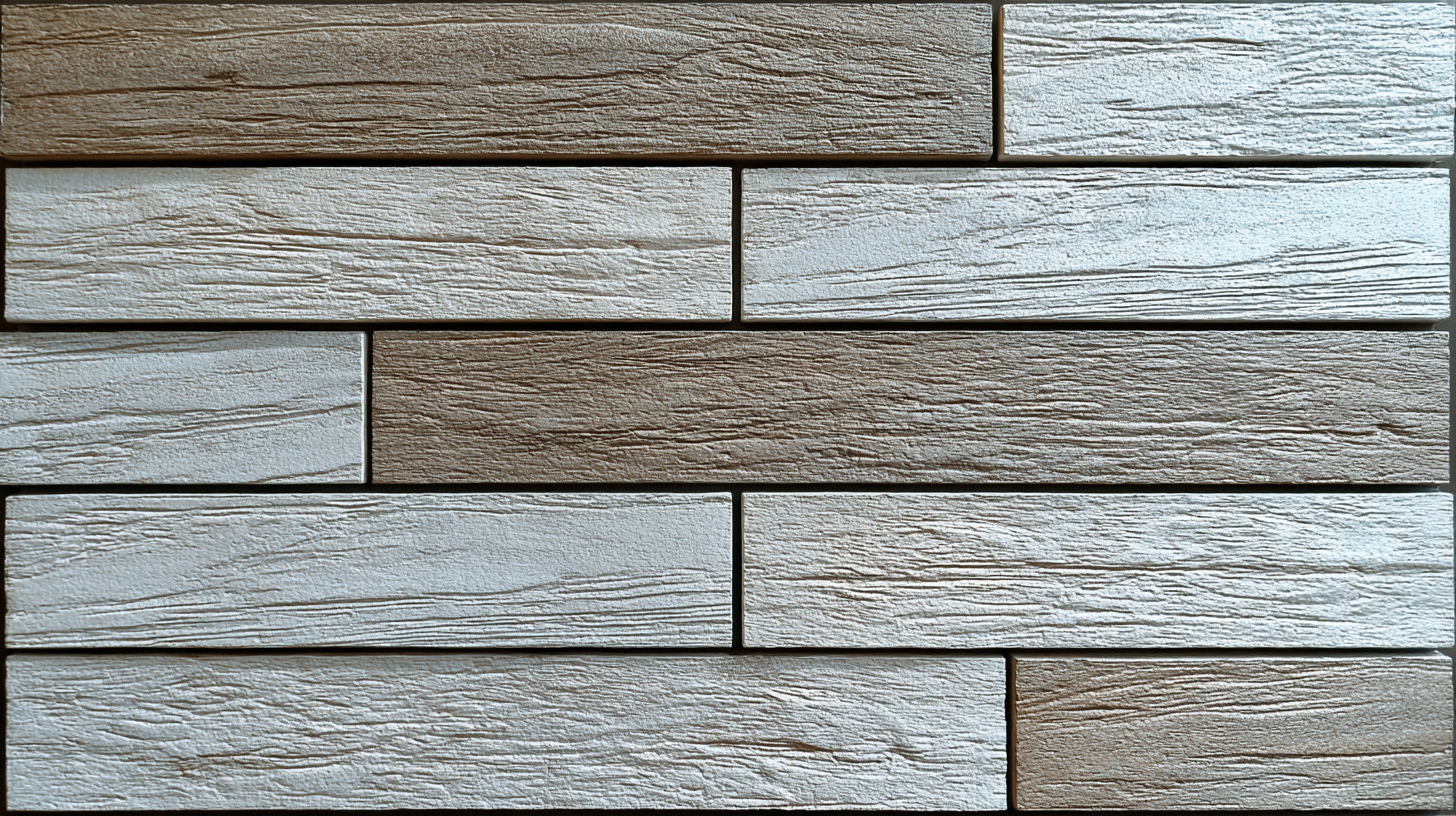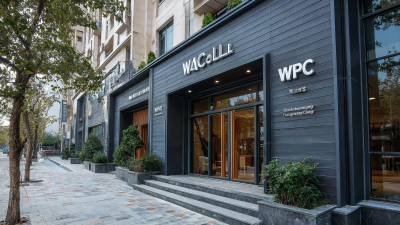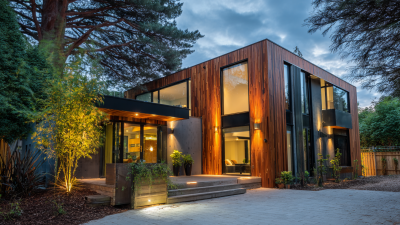Shandong Xiangying New Materials Technology Co., Ltd.
Shandong Xiangying New Materials Technology Co., Ltd.
In recent years, the focus on sustainable home design has intensified, leading homeowners and builders to explore eco-friendly materials that not only enhance aesthetics but also contribute to environmental conservation. One such material gaining traction is WPC Wall Cladding (Wood-Plastic Composite Wall Cladding), which combines the benefits of natural wood with the durability of synthetic products. According to the "Sustainable Building Report 2023," the use of WPC materials in construction is projected to grow by over 20% in the next five years, driven by their low maintenance needs and resistance to weathering, pests, and rot. Additionally, a study from the Global Green Building Council indicates that incorporating WPC Wall Cladding can reduce carbon footprints by up to 30%, making it an attractive option for environmentally conscious builders. As we delve deeper into the advantages of WPC Wall Cladding, it becomes evident that this innovative material not only meets aesthetic desires but also addresses the critical needs of sustainability in modern architecture.

WPC wall cladding, or wood-plastic composite wall cladding, is a modern building material that combines the best features of wood and plastic. Comprised of a mixture of recycled wood fibers and thermoplastics, WPC offers enhanced durability and resistance to environmental factors, making it an attractive option for sustainable home design. The composition of WPC provides the aesthetic appeal of natural wood while minimizing the negative environmental impact often associated with traditional timber.
The materials used in WPC wall cladding contribute to its sustainability. By utilizing recycled wood and plastics, WPC helps reduce waste and the need for virgin materials, aligning with eco-friendly building practices. Additionally, WPC is designed to be low-maintenance, eliminating the need for chemical treatments and frequent replacements, thus further decreasing its ecological footprint. Its resilience to moisture, mold, and pests adds to its longevity, making WPC an excellent choice for homeowners looking to invest in sustainable and durable construction solutions.
WPC (Wood-Plastic Composite) wall cladding is increasingly recognized for its significant environmental benefits in sustainable home design. Unlike traditional materials, WPC is made from a blend of recycled wood fibers and plastic, which helps reduce the consumption of natural resources. According to a report from the American Institute of Architects, using WPC can reduce the carbon footprint of construction materials by up to 50%. This reduction stems from the material's durability and longevity, minimizing the need for frequent replacement and maintenance.
Moreover, WPC wall cladding is designed to withstand various weather conditions, decreasing the likelihood of damage that often leads to waste. The Forest Products Laboratory notes that WPC can last 25 years or more, which is significantly longer than many traditional wood products. In addition, its resistance to mold, rot, and insect damage means fewer chemicals needed for treatment, making it a safer choice for both the environment and home occupants.
**Tips:** When considering WPC for your home, look for products with high recycled content to maximize sustainability. Additionally, ensure proper installation to enhance longevity and reduce waste over time. By integrating WPC wall cladding into your design, you not only make a stylish choice but also contribute positively to the environment.

The installation of WPC (Wood-Plastic Composite) wall cladding represents a significant advancement in sustainable building practices. According to a report by the Global WPC Market (2022), the demand for sustainable construction materials has surged, with WPC products expected to grow at a CAGR of 12% through 2025. This rapid growth is attributed to WPC’s durability and low maintenance requirements, which contribute to long-term sustainability goals.
When it comes to installation techniques for WPC wall cladding, precision and expertise are key. Experts typically recommend using a concealed fastening system that not only enhances the aesthetic appeal but also reduces the risk of water infiltration, a common issue in traditional cladding systems. As noted by the Construction Industry Research and Information Association (CIRIA), proper installation can extend the lifespan of cladding systems, minimizing waste and environmental impact. Emphasizing proper preparation, including moisture barriers and ventilation, ensures that buildings maintain energy efficiency while benefiting from the natural insulation properties of WPC materials.
Maintaining WPC (Wood Plastic Composite) wall cladding is essential for ensuring its longevity and optimal performance in sustainable home design. The first step in proper maintenance is regular cleaning. Using a mild detergent mixed with water and a soft-bristle brush can effectively remove dirt, grime, and any algae or mold buildup. It's advisable to perform this cleaning at least twice a year to keep the surface looking fresh and to prevent potential damage caused by organic growth.
In addition to regular cleaning, homeowners should inspect their WPC cladding for any signs of wear or damage. Look for cracks, chips, or warping, which could be indicators of moisture intrusion. Promptly addressing any issues can prevent more significant problems down the line. Applying a UV protectant can also enhance the durability of WPC wall cladding by shielding it from sun exposure, which can lead to fading over time. By following these maintenance tips, homeowners can maximize the lifespan of their WPC cladding while contributing to the aesthetic and ecological benefits of sustainable design.
When considering sustainable home design, the choice of wall cladding plays a crucial role. WPC (Wood-Plastic Composite) wall cladding presents several advantages over traditional materials like wood, vinyl, and metal. One of the primary benefits is its environmentally friendly composition, as WPC is made from recycled wood fibers and plastics, reducing the demand for virgin materials. In contrast, traditional wood cladding often leads to deforestation, while vinyl, though durable, is derived from non-renewable resources and can emit harmful toxins during its production.

Moreover, WPC wall cladding offers superior durability and longevity compared to traditional options. It is resistant to rot, warping, and insect damage, requiring less maintenance and thus reducing the frequency of replacements. This durability translates into a longer life cycle, making WPC a more sustainable choice overall. In addition, the energy used in manufacturing and transporting WPC is generally lower than that of traditional cladding materials, contributing to a reduced carbon footprint. These factors make WPC wall cladding an attractive option for homeowners seeking to adopt sustainable practices in their building design.






